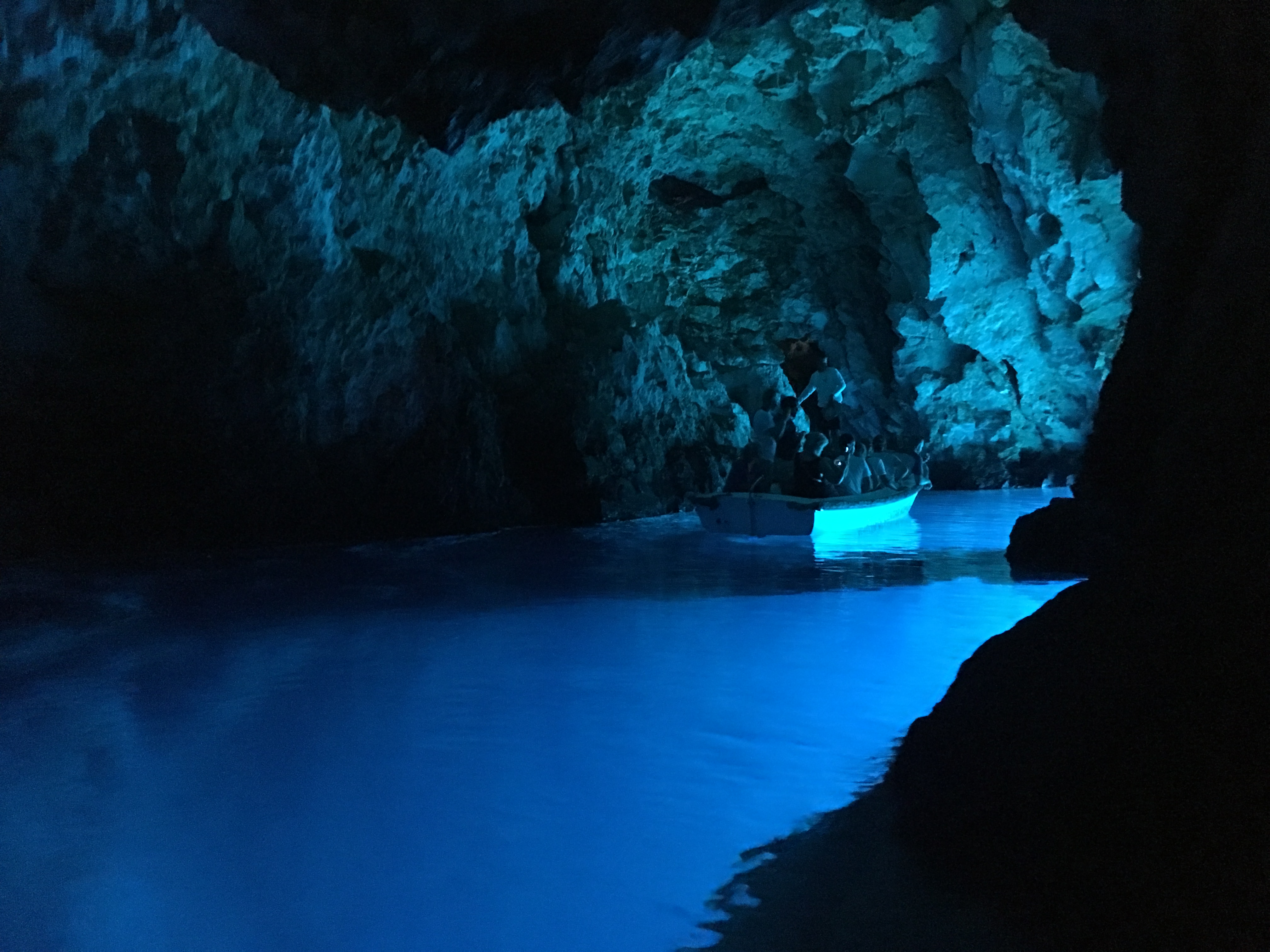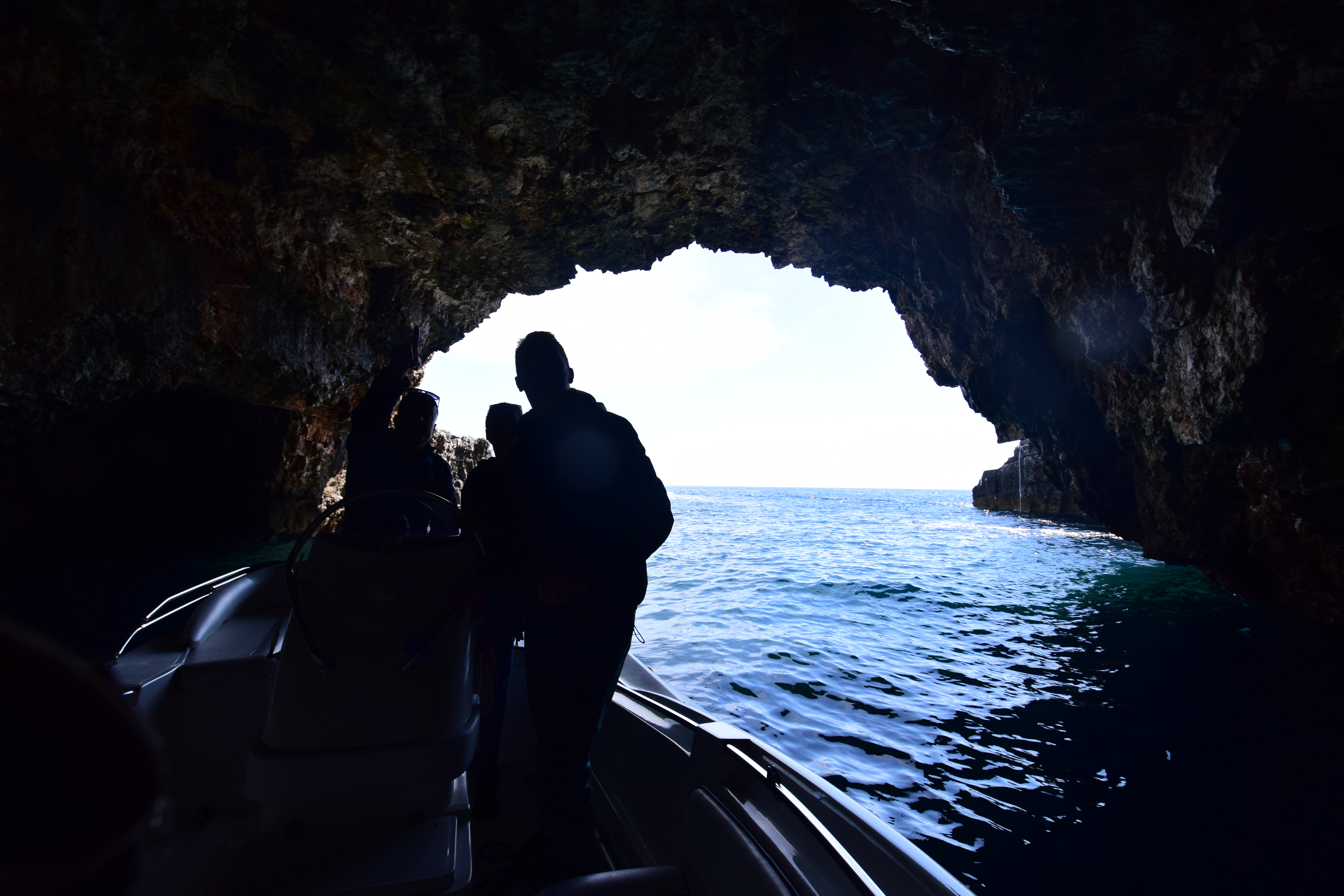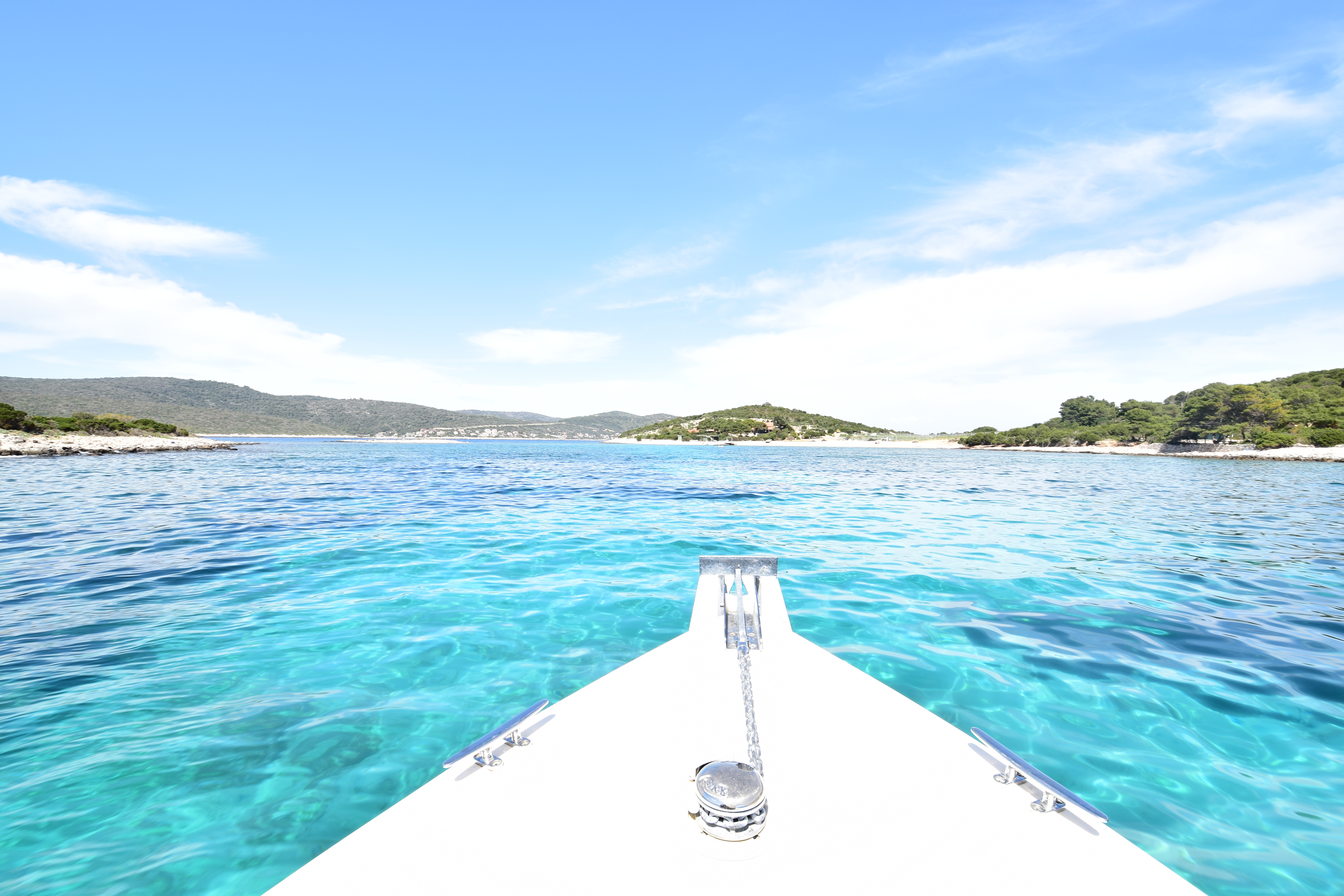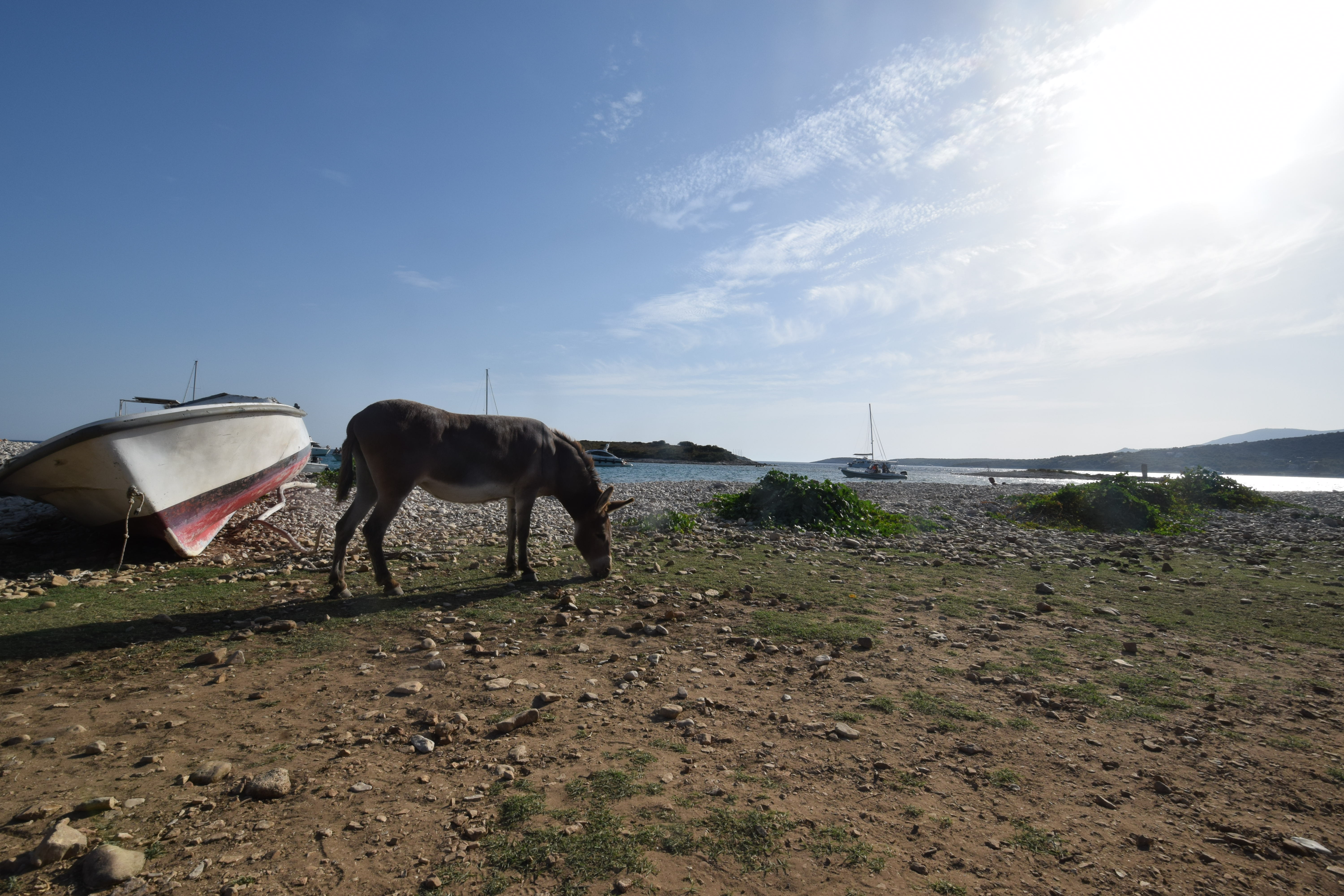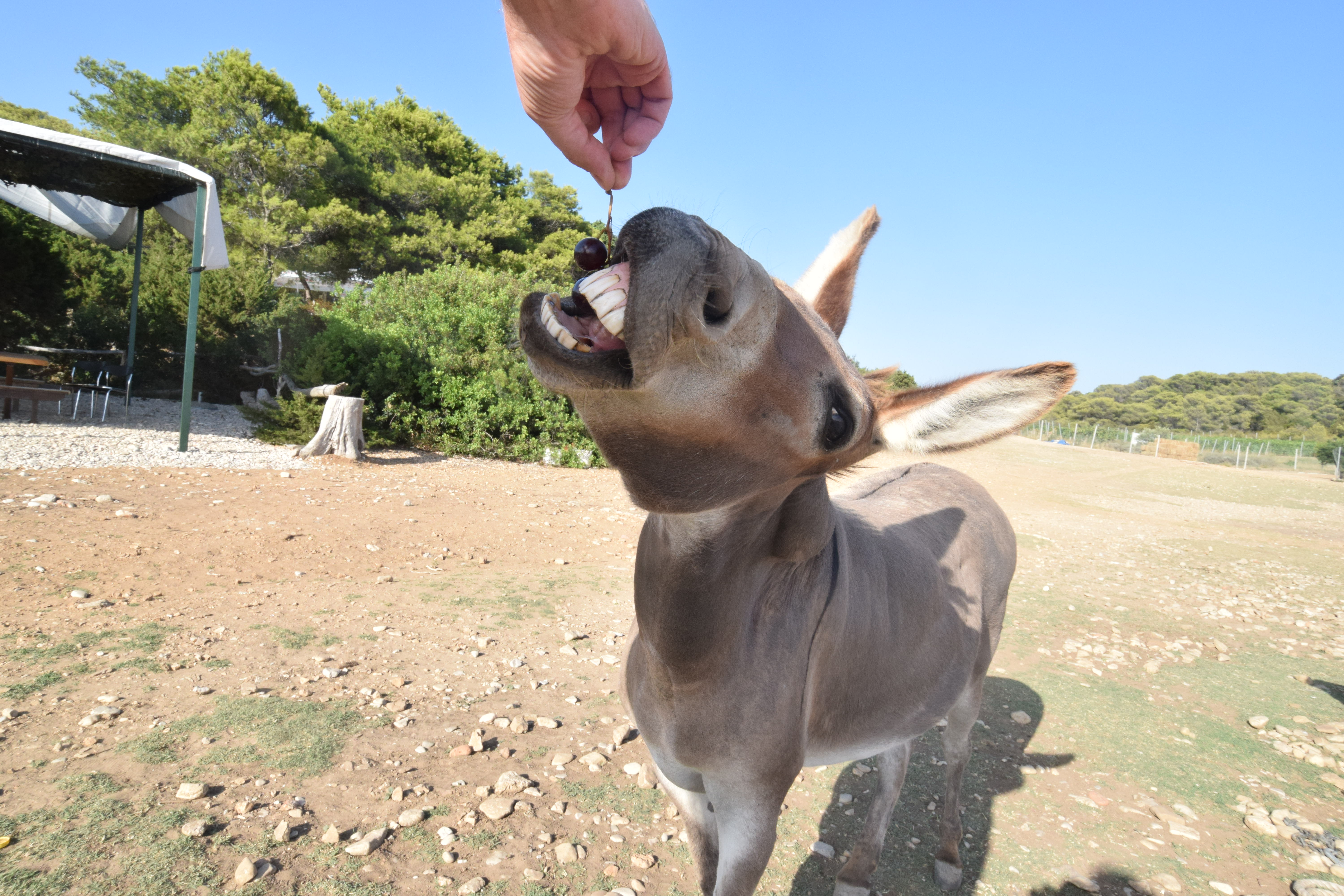Let me share a little story about Vis Archipelago and introduce you to one of the most fascinating islands in Croatia and the true natural beauties of the Adriatic.
All towns,villages, beaches and caves on these islands deserve a proper introduction and this article is dedicated to bring alive some pieces and stories about Vis Archipelago, to make you feel almost like you are there.
These islands are one of those places you need to see during your lifetime, you can thank us later!
We will share some interesting facts about the phenomenon called Blue cave on Biševo island, we’ll make a round of Vis island and it’s most significant settlements, Town of Komiža; fishermen’s fairytale village, Town of Vis, the biggest and the oldest settlement on the island, we’ll tell you something about Stiniva bay; one of the most beautiful beaches in existence, we’ll tell you a story about the mesmerising Green cave, Budikovac island and share some fun historical facts with you !
We’ll also share the photos we made during our visits to these phenomenal islands!
UNESCO GEOPARK VIS ARCHIPELAGO
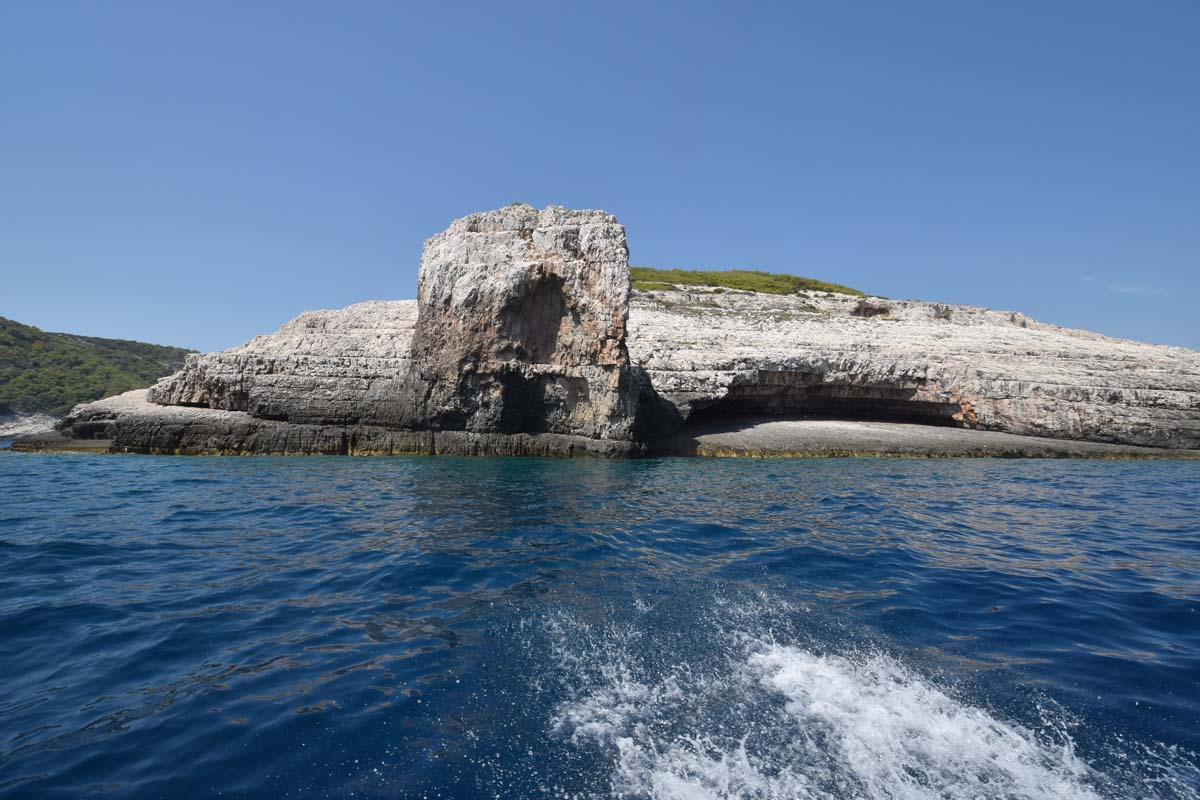
Geopark Vis Archipelago is part of the UNESCO Global Geopark Network from 17. April 2019. The area of the Vis Archipelago encompasses the island of Vis and the surrounding islands of Biševo, Sveti Andrija, Brusnik, Jabuka and Palagruža.
As far as geology, this is the most attractive area of the Adriatic, formed from the oldest and the youngest formations of rock, partly from volcanic rock and unique in the Adriatic area.

These characteristics of the area have been known for ages. While sailing close to the volcanic islets of Jabuka and Brusnik sailor’s compass needles would divert from the north thus placing them in danger and potential seawreck.
Even the interior parts of the island of Vis are formed from impermeable volcanic rocks that have made them rich with potable water which springs all along the Komiža Bay. Numerous water springs created fertile conditions for life and it is no wonder that ancient Greeks chose the island of Vis some 2400 years ago as the place where they would found their first Greek colony on the Adriatic.

Biševo island
Biševo island is one of the islands of Vis Archipelago. It is situated in the middle of the Dalmatian archipelago, five kilometers southwest of the Island of Vis. It covers an area of 5.8 km2 and has a population of only 19 residents. That number gets higher during the summer season.
The main settlements on the island are Salbunora, Porat , Mezuporat, Vela Gora, Potok, Polje, and Nevaja.
There was a school on the island, built in 1947. and closed in 1961.
The highest point on the island is Stražbenica, 239 metres high, accessible by a 45-minute walk.
Fertile fields are covering the center of the island, the northern part of the island is covered with pine forests and the rest of the island is covered with maquis shrubland or bare rocks.
The main industries are viticulture and fishing.
On the steep shores there are many caves, interesting rock formations, and wild untouched nature, so sailing around Bisevo island will truly impress you!
Blue Cave on Biševo island
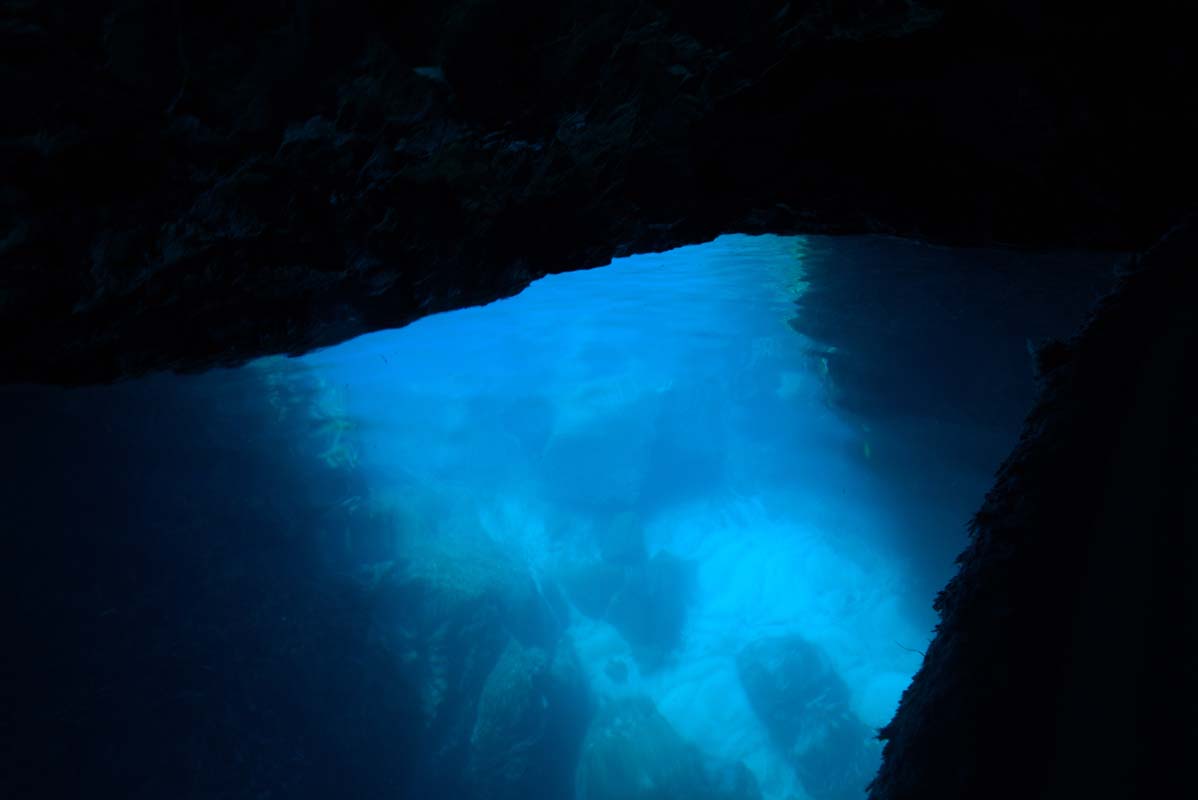
Blue cave is situated on the Biševo island in the bay called Baluni.
The cave was carved in limestone and it is a real phenomenon and natural wonder of the Adriatic sea. It is 18 metres long, 6 metres deep, and 6 metres high. The entrance to the cave is only 1.5 metres high and 2.5 metres wide.
It was well-known to local fishermen, who in 1884. showed it to the Austrian artist, explorer, and speleologist baron Eugen von Ransonnet-Villez. It’s not enough to say the baron was impressed by the beauty of the cave, he even wrote an article for the Viennese daily press declaring that the beauty of the Blue Cave surpassed even the beauty of Capri's famed Blue Grotto. From that time on, it became a major tourist attraction. In the beginning it was only possible to dive into the cave, but the baron organised the mining of the cave entrance so the cave opened for the public to see.
Every year the cave is a must for thousands of tourists and other people eager to find some adventure along the way. It is a real tourist attraction because the sunlight reflects inside and then the cave turns into a blue-silver paradise, it almost feels like you have entered into another dimension and a whole new world.
The best time for a visit is between 10 a.m. and 14 p.m. because then you can experience all the amazing colors that are created inside because of the rays of the sunshine.
The cave itself is very narrow so you can come inside only by a little boat and the weather is crucial for entrance.
Due to the fact the Blue Cave is protected as an important natural monument and governed by the authorities, it’s not allowed to swim inside. Maybe you could try to seize this opportunity if you arrive during the winter season. Entrance tickets can be bought nearby the cave, in bay Baluni, where you also dock the little boat that will take you to the Blue Cave.
As a part of a daily tour It can be easily visited from Komiža, Hvar and Split.
If you are looking for a trip to the Blue Cave from Split check our group tour or opt for a more specialised private tour!
Monk seal Cave
The Island of Biševo is also home to the Monk seal Cave – the longest sea cave in the Adriatic (160m) protected as a geomorphological monument of nature in 1967.
The cave is located on the southeast side of the island Biševo and it has been protected since 1967. The name of the cave originates from the fact that the Mediterranean monk seal massively populated it, today it's an endangered species.
It's special geomorphologically because the entrance into the Monk Seal Cave is quite big and wide, it narrows completely towards the interior. The length of the cave is 160m and it ends with a small shore that only small ships such as speedboats can reach.
The interior of the cave consists of a spacious hall and a low winding canal which, after about seventy meters, ends with a small beach where a sea seal could be found several decades ago
The entrance to the cave is free for visitors and it’s still allowed to swim inside, although it can get dark sometimes.
You can visit Monk seal Cave from Split on our group Blue Cave, Vis & Hvar (5 islands tour), or opt for a more specialized private experience.
Vis island :

Vis or “Issa’’ how the old Greeks have named it is probably the oldest in Croatia and a truly wonderful island with almost unspoiled nature and it should be on your bucket list to spend some time on this amazing island.
Vis is the farthest inhabited island off the Croatian mainland. It has a population of around 3,617 people.. It covers an area of 90.26 square kilometres. Its highest point is Hum, which is 587 metres above sea level.
The island's two largest settlements are the town of Vis on the island's eastern side and Komiža on its western coast.
The island's main industries are agriculture, fishing, fish refining and tourism. Around 20% of the island's arable land is covered with vineyards. Autochthonous vine species cultivated on the island are Plavac Mali, Kurteloška, and Vugava. The sea around Vis island is rich with fish, especially blue fish (sardine, mackerel and anchovy).
Beauty of the island is a story for itself. The beauty of the island was the reason Vis was chosen as a filming location for Mamma Mia! Here We Go Again in 2017, which gained the island worldwide fame and popularity.
You will be left speechless because while on Vis you will have a constant feeling like the time has stopped ages ago. The locals here are never in a hurry and they do not know the meaning of stress in their lives, probably because living in this irresistibly charming place is like some kind of therapy.
When visiting Vis island you can enjoy the beauty and the charm of the island’s main settlements, Vis and Komiža, enjoy the benefits perfect medditeranean diet, full of fresh fish and sea products, you can explore the island nature and beautiful beaches, choose some of the wide offer of daily tours and adventures, and try some wine tasting.On Vis you will discover a wide range of beaches and every beach is a story of its own because they all are all incredible, the only problem is which one to choose for swimming!
The most popular beaches on Vis island are Stiniva bay, Srebrna bay, Stoncica bay.
If you are looking for some calmness, privacy and dreamy little places don’t forget to pay a visit to some deserted or uninhabited bays and settlements!
One of the most interesting, secluded and not so easily reached beaches is a small but impressive Pritišćina beach.
How to get to Vis from Split

It’s easy to get to Vis island from Split. Vis is accessed by ferry boats and catamarans of Jadrolinija and Krilo companies.
Krilo catamarans connect the island during summer season, so you can easily visit Vis from Hvar island for example.
You can check the ferry and catamaran timetable here.
It is also easy to visit Vis island and the islands around in one day, as a part of group speed boat tours from Split.
Check our popular group tour of Vis, Stiniva, Blue Cave, Budikovac and Hvar here.
If you are looking for a one of a kind, special one day experience, check our custom tailored private Vis boat tour.
History of Vis island
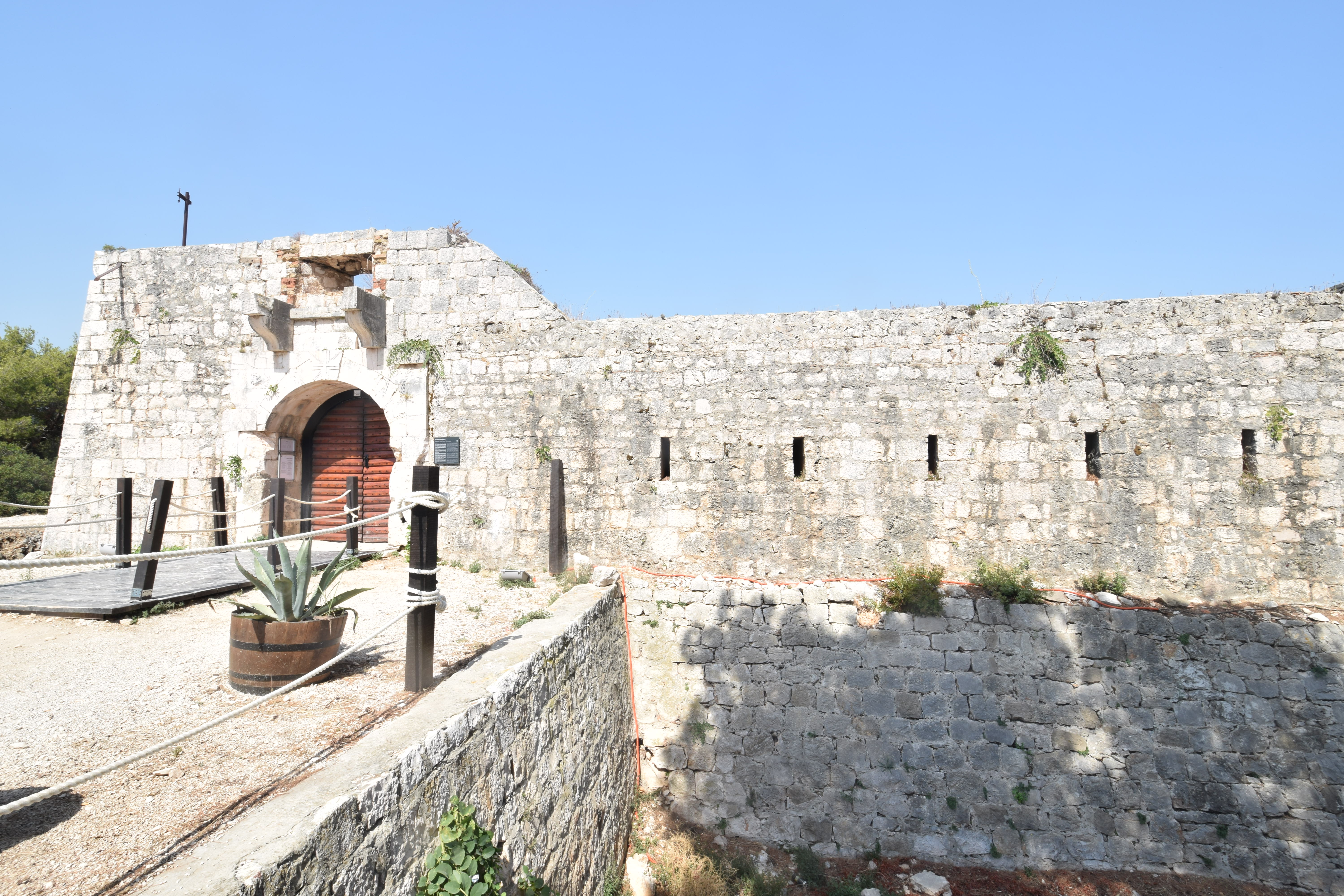
Vis island has a very interesting and dynamic history. It was first inhabited in the Neolithic period. The Greek ruler of Syracuse, Dionysius the Elder, founded the colony Issa on the island in the 4th century BC. This colony became an independent polis later that even founded its own colonies, the most notable of which was Aspálathos (the modern-day city of Split).
During the ages the island was held and ruled by the Liburnians, Roman Empire, Venice, Italy, Austrian Empire, Yugoslavia, even the British flotilla during the 2nd World War and finally by Croats, after the Croatian war of independence ended.
After the 2nd World war, because of its unique position, the Yugoslav People's Army used the island as one of its main naval bases until abandoning the base in 1989.
After Croatia became independent in 1991, its navy did not reclaim most of the facilities, and the many abandoned buildings are being used for civilian purposes and tourism, including tunnels, bunkers and a secret submarine base. In 2008, 34 mines left over from World War II were cleared from the island.
Town of Vis
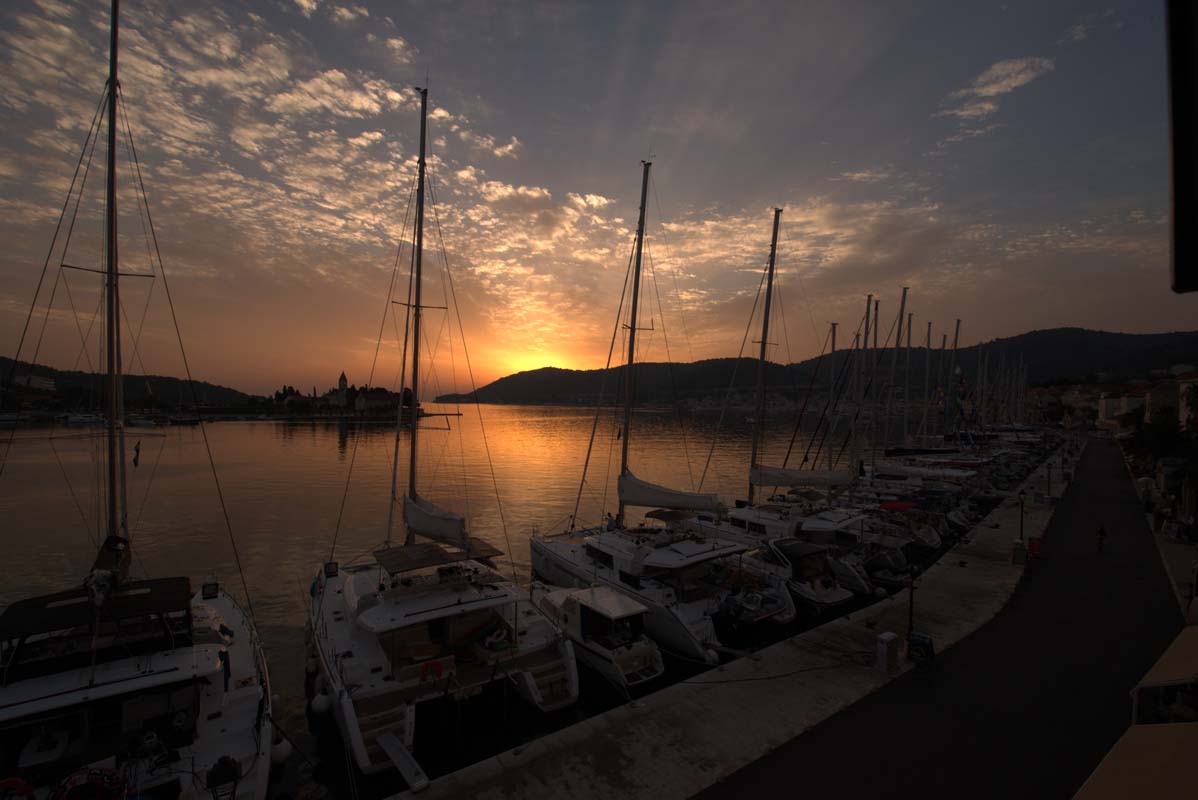
Today Vis is a famous tourist destination because of its unspoiled nature and crystal clear sea and that is why Vis is so different. During the night you can almost confuse this town with some metropolis because of the lights coming from yachts,sailing boats and fishing boats.
Vis is situated on the northeast side of the island and is considered the oldest settlement in Croatia.The city has 11 settlements-Brgujac, Dračevo polje, Marinje Zemlje, Milna, Plisko polje, Podselje, Podstražje, Rogačić, Rukavac, Stončica and Vis and the population of approximately 2000 people.
Vis developed from old settlements Kut and Luka who got together by building the church named Lady of Spilica in the 16th century. While on Vis you should also visit the church of St.Ciprijan,and the views of the stairway on the little square with the church surrounded by stone houses will leave you in serenity.
For a number of years during history the people in this area were engaged in viticulture and it was their most important way of income, alongside with fishing of course so you can see a lot of vineyards along the way.
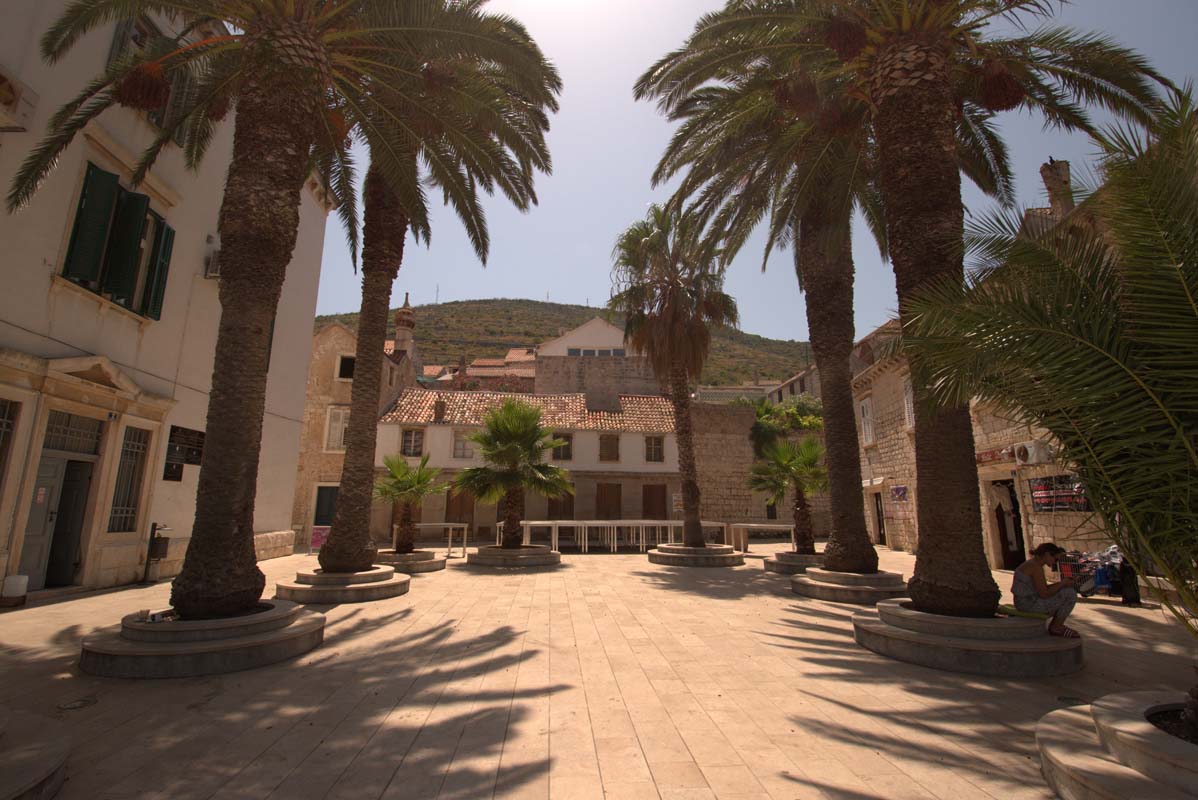
There is also a special story about the famous fortress George; the fortress was built during the occupation of the English army 1807.-1815. when they built a system of fortification all around the city and named them after their rulers. The construction of the fortress George began in 1812. by the order of British Governor Robertson who considered that the port needed to be protected in a better way.
In WW2 Vis was a huge military zone and was very isolated and therefore preserved,and actually only after that the tourism started to blossom.
Stiniva bay
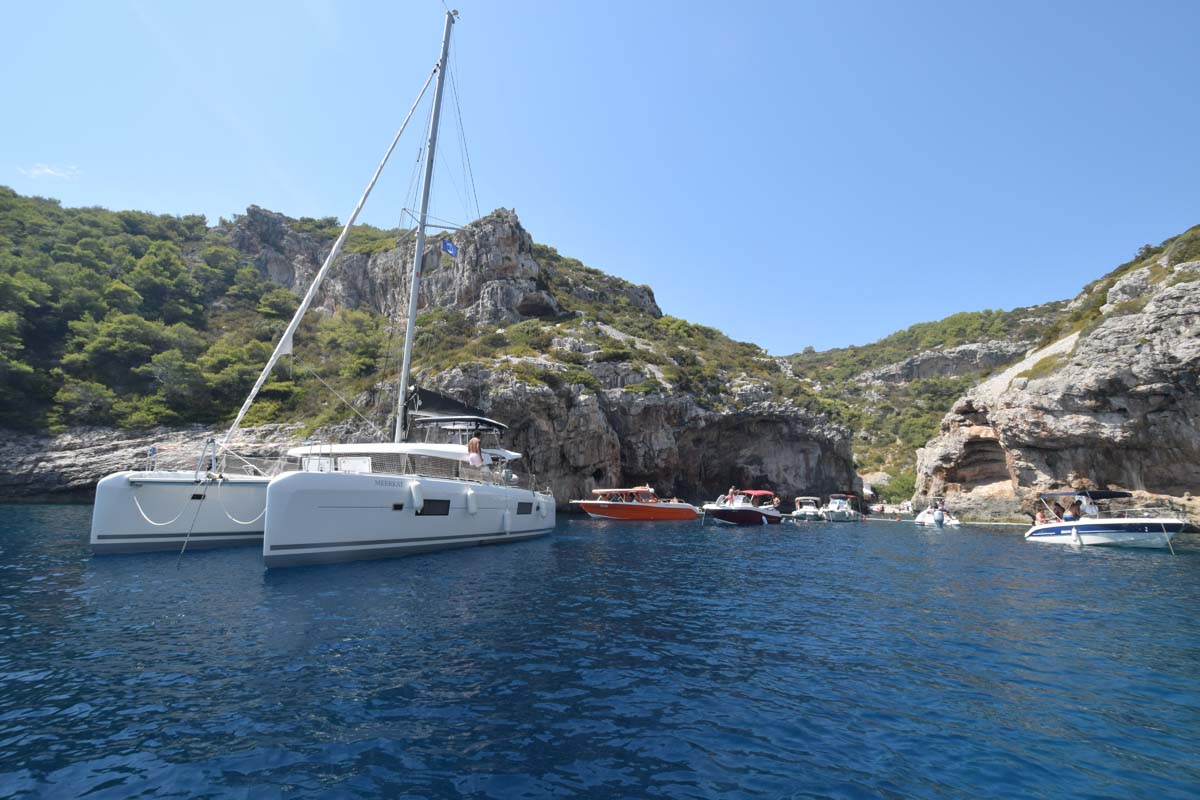
The popular Stiniva Bay is located on the west side of the island, close to Komiza town.
Stiniva cove is known for its unique natural beauty dominated by high cliffs that form a small “sea entrance” to this pebble beach with clear turquoise sea. It was voted, by tourism organisation European Best Destinations, as the most beautiful beach in Europe.
In Stiniva you will find cliffs hanging in the sea and that is what makes this beach so special, you can swim in the crystal clear water and there is a lot of natural shade and even a bar where you can order some drinks and refreshments.
Stiniva Bay is a protected part of nature in Croatia under the status of a significant landscape since 1967. This bay was formed during the ice age, when the sea level was 120 meters lower than today. Due to the watercourse that dug a canyon underground a karst cave was created. The cave collapsed several thousand years ago leaving the impressive hanging cliffs behind.
As sea levels rose after the ice age, waves hit the part of the cave towards the sea. Over the past several thousand years, the sea has flooded the lower part of the canyon and rounded pieces of limestone collapsed from the cave ceiling, creating the pebbles of today’s shoreline. The rocks in which the canyon is carved are limestones from the time of the dinosaurs. In these layers we find brown shells of shellfish (rudists) that once lived in the mud at the bottom of the sea.
If you are staying on Vis island, the beach can be reached from the mainland and from the sea. From the mainland it descends to the beach by a steep field path which is not suitable for children under 7 years of age. Going down the trail can take more than twenty minutes, so we recommend that you bring water, we also advise you to take this trail in good sandals or even better in sneakers.

If you are coming by the sea, you will have to anchor outside the bay and swim to the beach, because in season you will be quite crowded here, so in season if you strive for calm and quiet beaches, we recommend visiting this beach before the arrival of excursion boats, before 10 AM.
If you are planning to visit Stiniva from Split, check out our popular group tour of Vis, Stiniva, Blue Cave, Budikovac and Hvar here.
If you are looking for a one of a kind, special one day experience, check our custom tailored private Vis boat tour.
Town of Komiza

Komiža lies on the sunny side of the island and you will be putting many layers of sunscreen around noon so be prepared for the heat, they don’t call Komiža the warmest town on the Adriatic for nothing, and that is some notorious reputation!
The city is shielded from the sharp winds by Mount Hum and you will admire all the natural scenery once you get there.
Komiža town has been known as a center of fishing for centuries and there is even a legend that some fishermen from Komiža caught three million tons of sardines!
That was a really profitable economic branch that enabled the construction of churches, fortresses and other huge houses on Komiža.
While staying in Komiža, we recommend checking the Zanchi palace, the baroque palace dating back in the 17th century and a church of St.Nicholas, the patron saint of sailors and travellers. The important local tradition is the celebration of the Day of Town on December 6th with a ceremonial fire burning in front of the church.
Komiža fishermen of the 16th century developed their own type of fishing boat, the falkuša, which was used until the second half of the 20th century because of its excellent features.
While staying in Komiža you can enjoy day boat trips to Biševo island and the Blue Cave, Stiniva bay and the Green Cave plus other tours from Komiža and also you can book a lot of diving activities.
If you are going from Split to Komiža, you can take a ferry or catamaran to the Town of Vis, and later a taxi or bus to Komiža. Plan at least 1 night on the island, but 2 would be even better.
You can also visit Komiža in one day as a part of our private Vis island tour.
Tito’s cave
Tito’s cave on island Vis was named after marshall Tito in which he conducted negotiations for international recognition of Yugoslavia, so the cave got pretty famous!
You are able to get there from the road that is leading to Hum, the highest point on Vis island and the hidden stone stairway leads you towards the cave.
On the island there was a military base of the Yugoslav army so there are a lot of military facilities but the most popular one is the missile base in Stupišće near Komiža and there was an impressive complex of tunnels and bunkers who were on standby in the case of invasion!
These locations can be visited also during the Vis military tour.
Contact us for a private military tour of Vis island.
Restaurants on Vis island
Talking about Vis nowadays, everyone considers Vis like some kind of gourmet mecca or utopia. These are a few popular restaurants on Vis; Pojoda’’, Roki’s’’ tavern, Kantun’’, Villa Kaliopa etc..
Roki’s tavern is very popular among visitors as it is one of only few places where you can order famous “peka”, a traditionally baked meat or fish, for only 2 visitors, and for really affordable prices. Roki’s also has a winery on it’s estate and offers wine tasting options as well.
The most popular restaurant in the old town of Vis, located in the pedestrian zone is the cult restaurant called “Pojoda'’. The interior of the place is full of old paintings on the walls collected by the owner and the terrace is absolutely divine, situated in the shade of lemon trees and oranges that gives that special charm to it! All the dishes are creative in their own way of mixing fish food with beans and they call it viški’s way, but the real specialty is lobster stew and you just need to try it, you will be drooling over that one! And last is that you also don’t forget to save some room for the dessert ‘cause they serve carob cake covered in chocolate and that just goes to the heart and they grow on the tree in the yard! They also have a secret way of doing pogača and they call it ,,viška pogača’,but shh..you should check it yourself!
If you want to experience Vis island from Split, and want to enjoy the special gourmet experience and wine tasting, check out our private Vis boat tour.
Ravnik island & the Green Cave
On the south side of the island in the bay of Rukavac on the island Ravnik is the location of the Green cave.
It is named Green because there are a lot of algae and the sea gets that greenish glow. You will enjoy the unusual play of the light and the sea and there is a legend that you will live 100 years if the light from the top illuminates you.
You will be amazed by how many birds are inside hiding in this amazing cave so put this trip as your must see activity while on vacation!
You can enter the cave for free out of the season, but during June, July, August and September entrance is paid 100,00 HRK per person.
If you are planning to explore Green Cave from Split, check out our private Vis island tour.
Budikovac island
Budikovac island is almost uninhabited and you will see the whole palette of the colors inside the sea from turquoise to blue then green and the view there is stunning and will make you feel like in heaven,earthly yet havenly!
The island is situated between the other two small islands and they are making the lagoon together.
Interestingly enough,on the island there is only one resident and this person runs a popular restaurant, a perfect getaway for all the owners of the yachts and sailing boats.
This island represents everything Dalmatia is about!
Even a donkey has inhabited the island, welcoming all the visitors on the beach. By the way, this donkey is very friendly and loves fruit! Make sure to bring some fruits for him ( or her ) when you are visiting !
If you are planning to visit Stiniva from Split, check out our popular group tour of Vis, Stiniva, Blue Cave, Budikovac and Hvar here.
If you are looking for a one of a kind experience with lunch and wine tasting and extra locations included, check our custom tailored private Vis boat tour.
Palagruža
Palagruža is an archipelago of a dozen nearby islands and islets in the middle of the Adriatic sea, located in the municipality of Komiža and geologically very unique and with the mildest climate. It is the only place in Croatia that has growing subtropical vegetation!
There are more than 200 endemic plant species on Palagruža and animals which have adapted to this specific area.
The most important island is Vela Palagruža with a lighthouse. This 92 m high and 300 m wide island is actually narrow gorge ridge with inaccessible steep shores and two sandy coves
In the vicinity of Vela Palagruža there is the gorge island of Mala Palagruža,and on the southeast is the location of the steep island Kamik-which in translation means the rock, also 3 miles from Palagruža there is the southernmost point in Croatia, the islet called Galijula and the largest storm waves up to 9 m high were measured there!
Actually,there is a story on Palagruža that even two donkeys committed suicide by throwing themselves of the cliff because they were using them to transport cargo to the top!
So if you decide to go there it will certainly be one of a kind experience!
Sv Andrija
This uninhabited island also has a shape of a gorge ridge and his official name is the Saint,and it is very difficult to access the shores,the only bay available is named Slatina.
On the open seas on the west is the location of the volcanic island Jabuka,and the fun fact is that this island was home of wine amphorae,but nowadays their location is lost and impossible to trace.
The Benedictines had their own monastery here and all that is left from the convent today is the church of St.Andrija,the name of the island itself.
Even on St.Andrija,isolated as it is, which is really unusual, during WW2 the bombs were falling because of the Italian soldiers!
And for a long time the English called this island the Devil’s island because of the killings that happened to their men who survived in the shipwreck,the local shepherds were to blame.
Jabuka and Brusnik
These two volcanic islets are very special,and as soon as the ship approaches them the magnetic needle goes crazy and the impact of the sea and drought is huge during summer months in this area.
Jabuka is located past all the sea routes and no boat or any kind of ship can approach it, but is definitely worth visiting because it is a whole another experience in your life!

